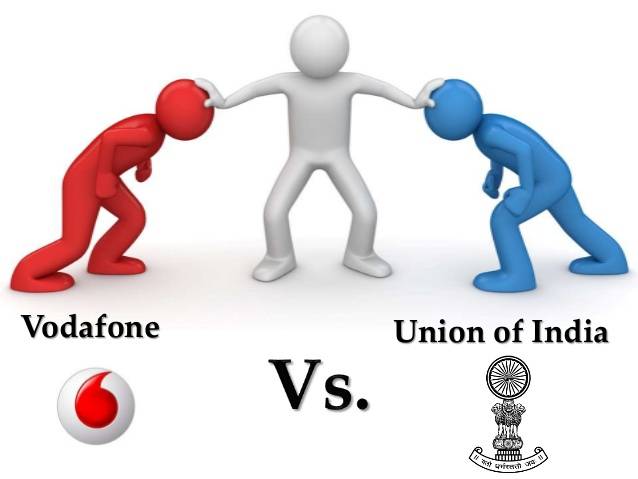FAQs on Employment Termination: COVID-19
The world is in stasis with the Novel Coronavirus (COVID-19) infecting millions of people the world over. The slow-balization of economies under the pretext of COVID-19 has immobilized citizens, and frozen funds thereby arresting growth across industries.
News of employees being terminated or laid off are common-stance with plummeting business sales and tanking asset prices in the economy.
In response to the pandemic, employers across industry verticals have altered traditional working methods to limit contact between employees. Embracing remote working methodologies, bonus and salary cuts, and mass layoffs, yet oblivious to the depth of its impact, one thing is abundantly clear – the workplace will never be the same again!
Here we have envisaged different scenarios pertaining to employment and termination considerations keeping in mind the interests of both employer, and employees, and analyze them through the lens of applicable laws and advisory.
Employer Perspective:
Can employees be terminated?
As per the Ministry of Labour & Employment (“MLE”) Advisory, employers are advised against termination of employment during the lockdown. It further states that if any establishment is non-operational, it must deem its employees on duty.
Thus, while termination can be carried out as per employment terms and applicable law (such as the Industrial Disputes Act for workman termination), it is advisable that employers do not terminate employment during the lockdown.
Specific care should be taken where the employer contemplates termination of workman or where the workforce is unionized, as a termination in the given circumstances is very likely to be questioned as an illegal termination resulting in potential industrial dispute under the Industrial Disputes Act.
Non-permanent employees must be laid off in the following order: Emergency, Temporary, Provisional, and Probationary. If additional reductions are necessary, permanent employees must be laid off on the basis of seniority.
Can an organization postpone payment for employee bonuses or payroll changes?
Yes, organizations can postpone or decline bonus/incentive payments and payment modifications. These are usually at the discretion of the administrator. On a revenue basis, for the commissions mentioned in the employment contract, the organization is responsible for fulfilling its contractual obligations.
However, if your organization has employees who are “qualified” under the bonus payment method (income is less than INR 21,000 / $ 280 / month), you cannot refuse to pay the “bonus”. In this case, the employer is legally obligated to pay 8.33% to 20% of salary to all qualified staff within eight months of the end of the accounting period.
What options do employers need to reduce labor costs?
The Department of Labour and the state government have issued several recommendations to public and private institutions to refrain from headcount and salary cuts during these difficult times.
The MHA (Ministry of Home Affairs) issues notices aimed at keeping salaries and ensuring that wages are paid on time. But in a directional move, the central government recently announced that it will cut salaries/welfare benefits for cabinet and parliamentarians by up to 30%. Some of the measures an organization can take are:
- Option 1 – Reduce leadership/advance level salaries to ensure all lower-level jobs are retained.
- Option 2 – Utilization of paid leave – For many employees with overlapping telecommunication roles, employers can evaluate the use of the leave / annual leave balance. This allows employees to get paid and keep their jobs.
- Option 3 – Sabbatical – For employees with duplicate work in a telecommuting situation, if there is no annual leave balance, such an employee should go on sabbatical leave until the situation improves. You may be asked. Their work is restored to full functionality. In this scenario, employees must continue to derive benefits from the insurance scheme and other benefits provided by the organization. If these employees sign up for the organization’s PF scheme, the company must continue to make minimal PF contributions during the sabbatical period.
- Option 4 – Work Readjustment – Some roles have work that needs to be completed, but not at 100% utilization. In all such cases, the organization can evaluate the options to reduce working hours and thereby readjust accordingly.
- Option 5 – Temporary Payroll Reduction – Some organizations evaluate the option of exercising payroll cuts above the level and position this as a temporary move to business recovery (former salary. If the level is restored).
- Option 6 – Dismissal / Layoff – In the extreme case where companies are fighting for survival, organizations are forced to dismiss staff. In such cases, it is advisable to make every effort to alleviate staff distress by complying with the terms and conditions and creating a cancellation package with minimal impact on staff.
Can employers calculate Indian unused hours by deducting Indian salaries/wages?
Working hours need to be modified to reflect the level of support required, and salaries adjusted (reduced) accordingly. This also applies to white-collar staff. As the national lockdown continues to be valid, that is, with order number 40-3 / 2020-DM-I, the Indian Government directs all employers to pay wages to workers (especially in the “workers” category). No dates and deductions.
Therefore, the employer can carry out wage cuts by exercising force majeure under certain circumstances in such cases. The use of force majeure is a legitimate process. It is recommended that you go through legal proceedings and documentation before officially doing so. It affects the overall business reputation, customers, and suppliers.
Is the employer obliged to pay during a lockdown?
Teleworking employees must be paid by applicable law and employment contracts. The question is only relevant if the organization does not allow it or if the employee does not WFH. The CG notice makes no mention of the employer’s obligation to pay. Blockade orders in some states, such as Delhi, Tamil Nadu, Uttar Pradesh, and Telangana, require employers to pay compensation without deductions.
Also, the Ministry of Labor and Employment issued a recommendation (“MLE Recommendation”) to all private employers on 20 March 2020. The facility is non-operational, where core activities cannot be performed remotely and include all shops, commercial facilities, and manufacturing departments engaged in non-essential merchandise.
It also states that employees who take leave during lockdown must be considered on duty without wage deductions. Similarly, the Chief Cabinet Secretary issued a recommendation (“CG Recommendation”) to the state government on March 22, 2020, demanding that the state government provide compensation to employers during the lockdown.
In light of these, there is no legal obligation in India for employers to pay during the lockdown. Therefore, the employer is not obliged to pay employees who refuse WFH, unless restricted under state order.
Such specific cases can be handled by company policy and applicable laws regarding leave, loss of salary, and disciplinary action. Nevertheless, if the employer is non-operating and the reason cannot be attributed to the employee, it is advisable to pay as if the employee was on duty.
Employee Perspective:
What is a layoff? Is it different from suspension?
Layoff means termination of employment by the employer or management (with or without notice). Layoffs are not due to the negligence of employees, but due to lack of work, cash, or supplies. Permanent termination is called termination.
However, given the Labour Dispute Act of 1947 (India), a layoff means the layoff of an employee due to lack of input or lack of input related to productivity, mechanical failure, or the effects of natural disasters.
To do so. The dismissal of employees does not mean that they have left the job, and if the situation improves, such employees can return to work. Layoffs apply to workers and suspensions apply to all other employees of the company, including managers.
Is it mandatory for employers to pay their employees during a lockdown even when it is not possible to continue job responsibilities in a lockdown?
Employees may not be able to perform their jobs for two reasons: Illness-self or family or, due to the nature of work not supported at home. Due to illness-self or family: There are various possibilities to participate: First if an employee is ill, sick leave will be applied by statutory store and establishment laws in each state.
Second, if an employee is tested but not positive, he/she can use sick leave to recover from the illness. Moreover, if an employee is tested positive for COVID-19 after returning from an official trip, the organization is obliged to provide 28 days of paid leave for quarantine and full recovery.
However, organizations are not required to provide paid leave for recovery, except in Karnataka, if an employee tests positive for COVID-19 after a personal trip. If an employee needs to take a leave to care for a sick family diagnosed with COVID-19 positives, the employee will carry out a self-isolation for 28 days and apply for the leave for yearly leave.
In light of these, there is no pan-India legal mandate for employers to pay during the lockdown. Thus, employers are not obligated to pay employees who refuse to WFH, provided there is no restriction under state orders. Such specific cases can be dealt with in accordance with the company’s policies and applicable law on leaves, loss of pay, and disciplinary action. Nonetheless, where the employer is non-operational and no reason can be attributed to the employee, it is advisable to pay as if the employee is on-duty.
What if my employer has to dismiss some staff? Is layoff legal in India?
As specified in the previous section, layoff or reduction is a process defined in India. It is subject to the terms of the employment contract and certain laws under state law and may apply to certain sectors/industries. There is also the notion of a “retirement allowance” that has no legal basis. However, it is a rule to reduce employee distress. Again, it’s a good idea to make staff transparent across all levels, to understand the distress/business situation, and to find solutions that are as friendly as possible.
Can Indian employers suspend their employees temporarily without pay?
If you do not have explicit contract rights to terminate your contract in these circumstances, there is no clear way to terminate your employment. Imposing a forced suspension without your consent may result in claims to your employer and you must seek your consent.
What are the options for full-time employees who may be laid off?
Instead of being dismissed, full-time employees can choose one of three options:
- The entire state within departments, classes, and options can be moved to a position held by the youngest and least employee.
- You may be allowed to voluntarily demote to another position in the next lower level class of the current Class Series within your department and geographical location.
- Layoff and displacement are by department
- Employees cannot transfer employees from another department
- Senior class employees cannot replace lower class employees with higher seniority
- Employees must meet minimum qualifications for classes and options
- Always downward movement
- Full-time and part-time should be treated separately
- If no one in the current class series has poor seniority, employees can return to their latest previous class.
If an employee has COVID-19, what are the implications?
Any employee who had exposure or may have symptoms or has contracted COVID-19 should be prevented from working at the employer’s premises in order to protect the health and safety of other employees. Employers must strongly recommend the employee to self-quarantine and isolate at home, circulate a suo moto report as required under state-specific orders and access healthcare services immediately.
With respect to the employer’s liability for compensation or bearing medical expenses, it will be important to determine if the transmission occurred at the workplace where the employer will be solely liable. For other situations where transmission has been in relation to employment, there is ample subjectivity and it will be difficult to substantiate and prove such claims.
Crashing economies, plummeting sales figures coupled with the uncertainty of business redemption is prompting many companies to terminate employment so as to save themselves from running out of business! Employees scarred by the unemployment in the wake of this crisis are asking themselves, “What now?” Job loss can be a disturbing, and difficult time – psychologically and financially – particularly with so many unknowns in our world right now.
But professionals terminated by their employers must be abreast with the key developments introduced by the government, as in the case of Karnataka, and navigate the upcoming chapter in their career with confidence! The key to navigating the rough waters of COVID-19 is to remember that this is temporary and we are in this together!
Tags: employment, frozen funds, employment termination, asset prices, notice of termination of employment, termination of employment contract
Force Majeure Invoked
The world is in stasis with the Novel Coronavirus (COVID-19) infecting millions of people the world over. Industries have come to a standstill and likewise, the land business is not saved either. Resources and incomes fall faster than expenditures in a crisis.
The slow-balisation of economies under the COVID-19 pretext has immobilized citizens, and frozen funds, thus arresting industry growth. It has adversely affected real estate project completion due to lack of labor availability on account of mass migration and plummeting asset prices thereby depressing purchasing power across the real estate sector and its customers.
Therefore, its resilience will be put through a litmus test in times where even banks and financial institutions, a monetary cushion for other industries, are under immense pressure for survival. In times when real estate players are frantically reviewing their contracts to invoke a clause that legally absolves them from non-performance of their contractual obligations, the force majeure clause gains utmost prominence.
Section 6 of the Real Estate (Regulation and Development) Act, 2016 (RERA Act) has envisaged the force majeure condition and states that the registration granted may be extended by the Authority on an application made by the promoter in that regard due to force majeure.
The Explanation provided in this section states that the expression “force majeure” shall mean a case of war, flood, drought, fire, cyclone, earthquake, or any other calamity caused by nature affecting the regular development of the real estate project. Therefore, the explanation of Section 6 which defines Force Majeure includes “any other calamity caused by nature”.
In instances where the agreement contains a ‘Force Majeure’ clause, the promoter has to ascertain the scope of the force majeure clause to ascertain whether the terms epidemic/ pandemic or the like are specifically stated therein. Once the promoter triggers the force majeure clause in the agreement with the allottee, the present crisis will not frustrate the entire contract or absolve the promoter of delivery of units but it will merely give the promoter an extension of time to perform the agreement.
Hence, the promoter of a real estate project will get an extension of time to hand over the possession of the units forming part of the real estate project if so provided by the contract. The duration of such an extension will depend on the impact of COVID-19 on the project.
Consequently, until construction milestones linked to payments are achieved by the promoter, the allottee will also not be called upon to pay further installments. However, for achieved construction milestones that trigger a payment installment by the allottee, it is highly unlikely that any sort of extension will be granted by the promoter.
On the other hand, if the agreement does not contain a ‘Force Majeure’ clause and there rises a failure to hand over possession on the part of the promoter, the allottee has the right to withdraw from the project under Section 18 of the RERA Act.
In such cases, the promoter is bound to return the amount received by him in respect of that apartment with interest at such rate as may be prescribed including compensation. However, if the allottee does not wish to withdraw from the project, the allottee shall be paid interest for every month of the delay till the handing over of the possession of the apartment.
In cases where a contract does not incorporate provisions dealing with the consequences of certain supervening events, the doctrine of frustration as embodied in Section 56 of the Indian Contract Act, 1872 may apply. Section 56 of the Contract Act inter alia provides that a contract to do an act which, after the contract is made, becomes impossible, or by reason of some event which the promisor could not prevent, unlawful, becomes void when the act becomes impossible or unlawful.
However, given the present circumstances and the impact of the global crisis, a party may not be keen to go down the route of frustration which ultimately causes termination of the contract in its entirety, and may at best want temporary relief from the performance of its obligations under the contract.
Generally, invocation of Section 6 of the Act is not automatic and the promoters will have to make an application to the Authority for an extension. However, the Ministry of Finance of India has considered the COVID- 19 as a natural calamity and a Force Majeure event giving a breather to the real estate players in India, along with an extension of the registration and completion date suo-moto by 6 months for all registered real estate projects expiring on March 25, 2020, to infuse growth into the country’s ailing real estate industry.
Although this move may not fully save the industry from the economic shocks it is in, it is likely to provide the real estate industry with resilience and resources to survive and take on the bigger battles that lie ahead as consumer buying power would be severely hit by the pandemic, with real estate dropping low on their priority list.
The real estate industry has been struggling with a sluggish trajectory of development that came to a complete standstill during the pandemic. Supporting real estate players to survive the bear-run, the Ministry of Finance announced a 6-month extension of the suo-moto registration and completion date for all registered projects which expire on or after March 25, 2020.
Given the fact that the present global crisis has brought a lot of economic activities to a grinding halt and is unprecedented and one which no average contracting party could have foreseen, the government move is a step in the right direction in recognizing the Force Majeure clause.
Similarly, Singapore has in 7th April 2020 passed the COVID-19 (TEMPORARY MEASURES) ACT 2020 (ACT 14 OF 2020), to provide temporary measures, and deal with other matters, relating to the COVID-19 pandemic. This Act which comes into force on 8th April 2020 provides for inter alia temporary relief from actions for inability to perform the scheduled contract as well as additional relief for inability to perform construction contract or supply contract.
Although victory over the Indian economy’s pandemic and reopening remains elusive, deadline relaxation coupled with liquidity infusions may help the real estate industry see some light at the end of the tunnel.
The Force Majeure clause has the power to sustain an entire industry and keep it afloat while the COVID-19 dust settles, and not jeopardize the sustenance of real estate players by leaving a lot at the discretion of judicial interpretation where words of a contract are sacrosanct.
The regulatory relaxations and economic relief packages announced in the light of the pandemic may support the demand for housing and help to achieve the government’s objective of ‘Housing for All’.
Tags: force majeure clause in contract, define force majeure, litigation mediation, force majeure event, force majeure clause, force majeure, pre litigation mediation

Vodafone vs. India: The Many Twists and Turns
The legal tussle between the telecom giant, Vodafone, and India Inc. tied at deuce with Vodafone’s recent win in a tax liability case at The Hague.
A unanimous decision of the Permanent Court of Arbitration at The Hague ruled in favor of Vodafone on the grounds that India’s retrospective demand of Rs. 22,100 Cr. as capital gains and withholding tax imposed on Vodafone violated the “fair and equitable treatment” guaranteed under the investment protection pact between India and the Netherlands i.e. the Netherlands-India Bilateral Investment Treaty (BIT).
While the tax dispute involving Rs. 12,000 crores in interest and Rs. 7,900 crores in penalties started with Vodafone’s acquisition of Indian mobile assets from Hutchison Whampoa in 2007 where-after the Indian government insisted on payment of taxes on the $11 billion acquisition, while Vodafone disputed against it before the Bombay High Court, which ruled in favor of the Department of Income Tax.
Subsequently rejected by the Supreme Court, which held that Vodafone was not required to pay any taxes and demanded Income Tax Department refund Rs. 833 crores in taxes to Vodafone Idea.
However, the convoluted tussle took another turn in 2012. To prevent abuse and plug the loophole of such indirect transfer of Indian assets, the government in 2012 amended the law thus empowering the Income Tax Department to retrospectively tax such deals, as a result of which the onus of paying the taxes fell back on Vodafone which the firm contested through international arbitration.
Thus, the recent setback at The Hague leaves India Inc. with one most obvious option i.e. challenging the award under Section 34 of the Arbitration and Conciliation Act, 1996 which provides for limited grounds to challenge an arbitral award.
A party to a dispute, if dissatisfied, has the right to challenge the award and in light of the persuasive effect, it is likely to have on other treaty arbitrations that concern retrospective tax measures, such challenge is justified. The government should consider damage mitigation strategies after losing against Vodafone in the backdrop of similar, but separate lawsuits such as the Cairn Energy tax dispute.
On the flip side, as the Permanent Court of Arbitration situated in The Hague had passed the award in favor of Vodafone, there lies no further authority for putting up an appeal. The government can only go back to the Permanent Court of Arbitration on some technical point, but that will not serve any purpose.
Furthermore, the Indian Arbitration Act obliges the government to implement a foreign tribunal award, Vodafone can ask for the same in case the award is challenged in Indian courts.
However, in the present scenario, since all the property, both tangible and non-tangible of Vodafone, lies outside India it will be difficult for the government to successfully challenge it in Indian Courts due to jurisdictional issues.
Alternatively, India Inc. may choose to gulp in the award passed in favor of Vodafone and do nothing. However, still, waters on the legal front may have a ripple effect among investors.
At the outset, the legal wrangle may appear to have no additional negative impact on investor sentiment as they recognize those challenge proceedings are part of the norm, appealing against an international arbitration award may disincentivize investors in the long term.
The reason is, that a change of legislation against the spirit of the Supreme Court judgment on the subject by resorting to retrospective legislation, certainly creates an unpredictable and unstable business environment.
From an international investor’s perspective, investment in countries leading to change in legislation when companies get entangled in legal tussles with governments for non-compliance with international orders jeopardizes investor interests and hurls them into an abyss of losses.
Besides discouraging investors, it creates interruptions in the ease of doing business in such countries and thus disincentivizes them to make any investments or indulge in any form of funding. Vodafone’s victory at The Hague may accord partial relief in the backdrop of its mounting AGR dues owed to India Inc.
However, it is likely to have implications on other international arbitration cases over retrospective tax claims and the cancellation of contracts. If other companies like Cairn Energy and a dozen others were to follow suit, the Government of India could end up paying to burn a hole in its treasury for damages if it loses.
It is debatable whether the fault lies in the tax laws and the amendments made thereof, however, the after-effects will have to be borne by the entire economy regardless.
Tags: vodafone mergers and acquisitions, merger and acquisition of vodafone and idea, india bilateral investment treaty, vodafone acquisition, vodafone acquisition, bilateral investment treaty of india, india bilateral investment treaty

Environmental Impact and Threats
Since the inception of civilization, the human species have manipulated the environment to suit its own benefit. In order to satisfy the needs and demands of the increasing population, industrialization and urbanization became inevitable, and the apparent significance proved to be injurious to the global environment.
Man-made alterations to nature invariably led to a change in biodiversity and ecosystem, ozone layer depletion, global warming, water pollution, air pollution, and most visibly climate change. In the human pursuit to drive nature as per their own whims and desire, environmental pollution became an inevitable consequence and a pressing issue today.
However, in the wake of the COVID-19 pandemic, cities, and villages across the globe have come to a standstill with most countries under a partial to complete lockdown as a measure to contain the spread of the deadly virus. Mobility restrictions, supply chain disruptions, and plummeting asset prices are only the tip of the iceberg with regard to economic consequences.
Meanwhile, efforts to limit transmission of the SARS-CoV-2, through restrictions have had an exceptional environmental effect. Due to the non-functioning of industries, industrial waste emission has decreased to a large extent. Vehicles are hardly found on the roads resulting in almost zero emission of greenhouse gases and toxic tiny suspended particles to the environment.
Due to the lesser demand for power in industries, the use of fossil fuels or conventional energy sources has been lowered considerably. Ecosystems are being greatly recovered. In many big cities, the inhabitants are experiencing a clear sky for the first time in their lives.
The pollution level in tourist spots such as forests, sea beaches, hill areas, etc. is also shrinking largely. The ozone layer has been found to have revived to some extent. The pandemic has displayed its contrasting consequence on human civilization, in the sense that, on one hand, it has executed worldwide destruction, but created a very positive impact on the world environment on the other hand.
The UN Secretary-General in his call for solidarity during the crisis stated, “We must ensure that lessons are learned and that this crisis provides a watershed moment for health emergency preparedness and for investment in critical 21st-century public services and the effective delivery of global public goods.”
He declared that the UN has a framework for action – the 2030 Agenda for Sustainable Development and the Paris Agreement on Climate Change and will endeavor to keep its promises for the people and the planet alike. UN report warns that the current climate change pledges and legislations like the global Paris Agreement (2016) are insufficient and inadequate to limit global warming by the end of the century to two degrees Celsius.
However, the United States was the first country to withdraw from the Paris Agreement citing the restrictions on the economy. This withdrawal and the cause behind it are the deathly reasons behind recurring flashes of climate change in the form of natural disasters.
A common person can contribute substantially because a mass of common people only makes an entire population. While building homes, individuals must stress a LEED certification which is awarded to “green homes”. Tax rebates are awarded to property buyers of green buildings and commercial establishments for five years.
Reduced usage of air conditioners, increased usage of public transport and bamboo products are important pointers. Utilizing bamboo products in daily routine like brushes, combs, and sanitary pads don’t limit their advantage to climate but also gives impetus to the growth of the industry in backward areas.
Women must be advised to use menstrual cups in place of sanitary pads, as they are relatively economical and bring down waste massively. The government has pushed for increasing the demand for jute since 1987; it should take similar steps to give buoyancy to the bamboo and cloth industries.
It is estimated that the livestock industry produces a whopping sixty-four percent of ammonia which induces acid rain. The livestock industry also generates 65 percent of human-related nitrous oxide, which has 300 times the Global Warming Potential (GWP) of CO2. Estimates of the water required to produce a kilo of beef vary, from 13,000 liters to 100,000 liters.
The aforementioned are some of the many horrifying statistics that must make an individual push for at least three days of no meat per week. A shift in diet can lower greenhouse gas emissions much more quickly than shifts away from the fossil fuel burning technologies that emit carbon dioxide.
The current generation is fixated on fast fashion. It has been estimated that there are 20 new garments manufactured per person each year and we are buying 60% more than we were in 2000. Each garment is worn less before being disposed of and this shorter lifespan means higher relative manufacturing emissions.
Textile production is one of the most polluting industries, producing 1.2 billion tonnes of CO2 equivalent per year, which is more emissions than international flights and maritime shipping. Consumption rates of textiles have to decline.
The present and future generations have to be vocal and must resist the mass falling of trees in biological hotspots. There was an unprecedented uproar recently when “Array” was taken down in Maharashtra and currently a similar protest is in force for Arunachal Pradesh. Citizens must be proactive and must constantly voice their concerns. Only when voices are raised, the legislation is put in place to mirror such concerns.
Path-breaking laws like “The Air (Prevention and Control of Pollution Act) 1981” and “Environment (Protection) Act, 1986” are a result of public and global pressure. The environment and economy complement each other’s protection and not blow each other out of proportion.
Lastly, it is pertinent to note that the pandemic showed a glimpse into a horrendous future and gave us a reminder of the intimate and delicate relationship between people and the planet. Any efforts to make our world safer are doomed to fail unless they address the critical interface between people and pathogens, and the existential threat of climate change; so on World Environment Day 2020, we should take a vow to make our Earth more habitable.
This Day assumes unparalleled importance as it sets out an important environmental mission for a year, with a view to “celebrate bio-diversity” and replenish and revive the eco-system.
Tags: effects of water pollution, environmental impact assessment, environmental impact, human impact on the environment, air pollution effects on the environment, environmental threats, effects of pollution on environment, environmental aspects

Return to Work Checklist for Employers
India has forayed into Lockdown 3.0 until May 17 and we all are patiently waiting to know the new changes that Lockdown 4.0 might bring in. But the real question is – how long will this economic standstill last?
The health and economic consequences of COVID-19 coupled with other unknown variables compelled the government to divide all districts within India into three zones namely – Red, Orange, and Green – each have varying levels of restrictions aimed at containing the spread of the virus.
As Green and Orange zones gear up to open factories, and offices, we cannot overlook the possibility of potential relapses and a subsequent wave of infections.
This double-sided sword necessitates containment of the virus on one side, and re-stabilization of the economy on the other, people and their government will be tip-toeing to curb the virus and recession simultaneously.
Employers are a vital part of the chain and thus pose the question – what is the ‘Return To Work’ checklist that an employer must comply with by checking off rules and regulations as propounded by the government to provide an overall healthy environment?
Existing Legislation
Legislation governing the health and safety of employees in the workplace is highly fragmented and has a limited scope and specific objectives. The Factories Act, 1948, provides for the health, safety, and welfare of the workers in the manufacturing sector, The Mines Act, 1952, safety in mines.
The Building and other Construction Workers (Regulation and the Employment and Conditions of Service) Act, 1996, provides for regulating the conditions of service of building and other construction workers, whereas the Beedi and Cigar Workers (Conditions of Employment) Act, 1966, provides for the safety, health and welfare measures for a particular class of occupation.
Last year, a bill for consolidating these acts called Occupational Safety, Health, and Working Conditions Code, 2019 (the “Code”), was proposed to set duties of employers and ensure a workplace free from hazards with high safety protocols.
In the wake of the ongoing pandemic, the proposal would require an overhaul. However, in the interim, the Ministry of Home Affairs exercising its power under the Disaster Management Act, 2005, has prescribed the ‘National Directives’ and ‘Standard Operating Procedures to ensure the health and safety of employees working at offices allowed to remain open during the lockdown.
More or less an employer should incorporate all the legal compliance pertaining to its business together with the new guidelines specifically meant for the pandemic with some complicity and set as a base threshold, before allowing employees into offices.
Spreading Awareness
At the outset, an individual or employer must be aware of what is going around in the society at large and further check on employees’ health, sanitization of office space, etc. The awareness pre-requisite may seem trivial, but its absence may have catastrophic consequences – health-wise and monetarily.
All employers should follow the guidelines and reports of WHO, the Indian government, or their local authority to have a hold of the situation which is not only necessary for the wellbeing of its employees but also for understanding and planning business decisions and the next move to deal with it.
Moreover, employers should provide a guidance report prior to commencement of work in offices and provide necessary training, including for employees engaged in security and housekeeping jobs. All awareness material including posters, presentations, etc. should be displayed in conspicuous places in the workplace (including in regional language) as a reminder of safety and hygiene, and most importantly be consistent with rules laid down by the government.
Planning & Management
The next step would be meticulous planning and development of a well-devised course of action for the future. This includes setting up a response team comprising all key managerial personnel that would deal specifically with the new need of the hour.
Communication policies should be reviewed, reassessed, and revised that minimizes physical interactions and promotes social distancing. Telecommunication and work from home should be promoted wherever possible, which can be achieved efficiently through a reliable communication channel.
Further, travel policies should be revised limiting all non-essential travel for the time being. In offering flexibility, a business should look for alternative sources of creditors, suppliers, and markets to ensure an undisrupted supply chain in the future arising out of any contingency.
Basic Prevention Measures
As notified by the Ministry of Labour and Employment, the employer should ensure these primary preventive guidelines to ensure a safer workplace environment amidst the Corona chaos. Ensuring proper cleaning and frequent sanitization of the workplace, particularly of the frequently touched surfaces.
In fact, employers must ensure a regular supply of hand sanitizers, soap, and running water in the washrooms and promote regular and thorough hand-washing by employees, contractors, and customers.
Advising all staff who are at higher risk i.e. older employees, pregnant women, and those with underlying medical conditions, to take additional precautions and preferably allow them to work remotely. It may be ensured that such employees are not exposed to any front-line work requiring direct contact with the public etc.
Compensation and other checklists
Employers must ensure clarity on the compensation front with employees from all rungs of the ladder. As per government direction, leaves taken by employees due to the lockdown shall not be treated as leave and further discouraged employers from wage deductions and lay-offs. If an organization goes for alternate working days for two groups of employees the rest day of one group should not be treated as leave and thereby no deductions should be made.
Although the delay in increment, giving bonuses, etc. may be carried out as per the financial health of the business and sales forecast. Employers must ensure confidentiality of employee/s contracting the disease or taking sick leave to ensure no discriminatory practice and thereby mitigate panic at the workplace.
Conclusion
A widely conceived notion is that we are headed towards a new future where social distancing or remote offices may be the new normal. So much so that when right now we are talking about safety at the workplace and we would see before our eyes the very change in the definition of the workplace!
Naturally, employees are the key drivers in client servicing and relationships, thus service providers and service seekers alike must pay attention to such essential and unavoidable changes in society and the legal framework governing it.
Employers have a multitude of challenges to surmount within a short span of time and therefore the best checklist for an employer would be to make employees well aware of the situation at hand and take direct action at a lower level about dealing with situations contingent on it. Adoption of guidelines provided by WHO, and our Central, and local governments into our day-to-day etiquette would be the key to crisis mitigation and management.
Tags: Return-to-Work, health consequences, economic consequences, Return to Work, checklist for employers, back to work, back to work program, return to work program 2021






